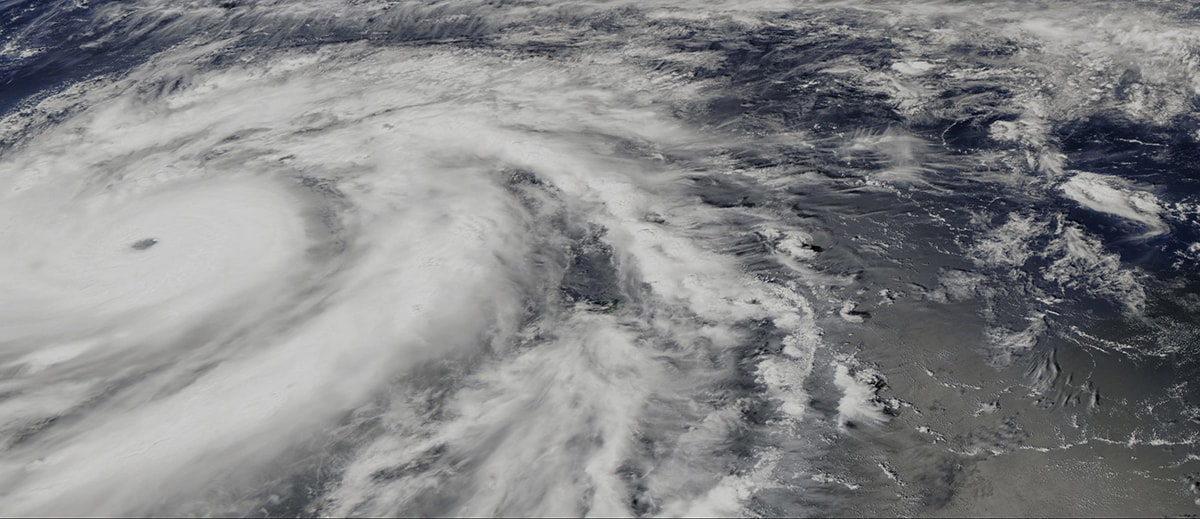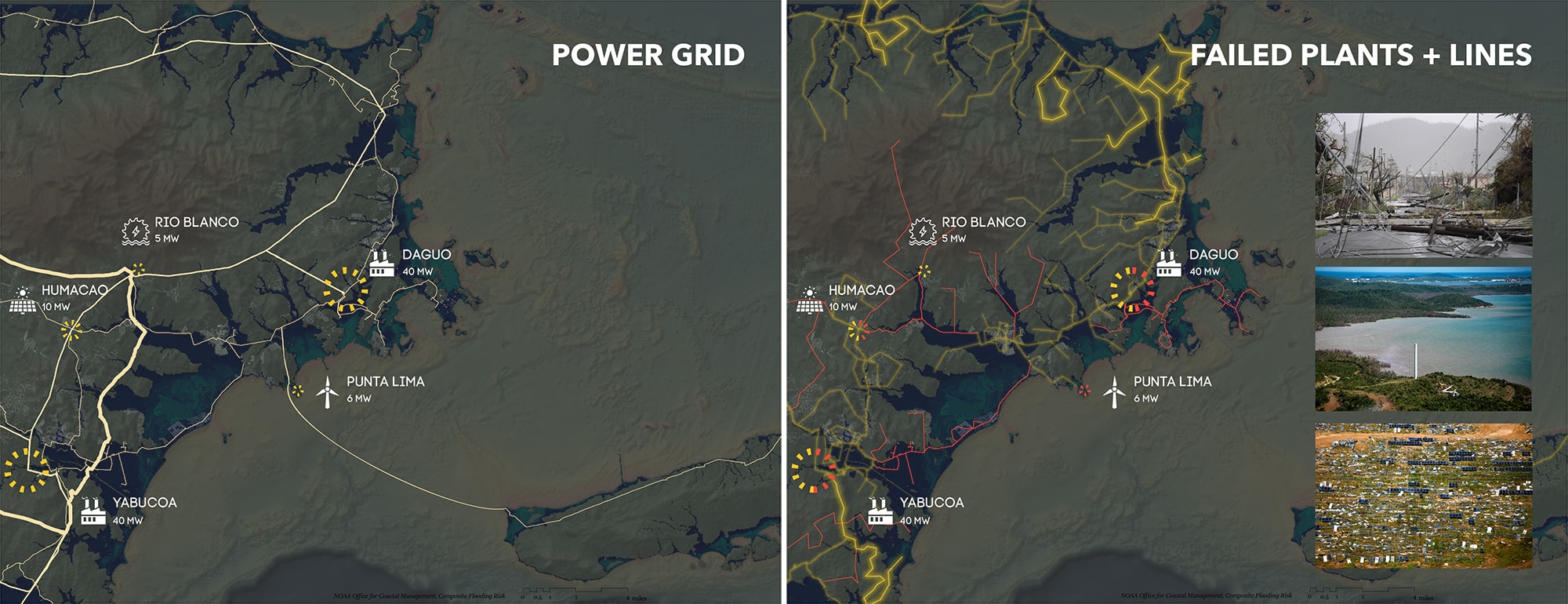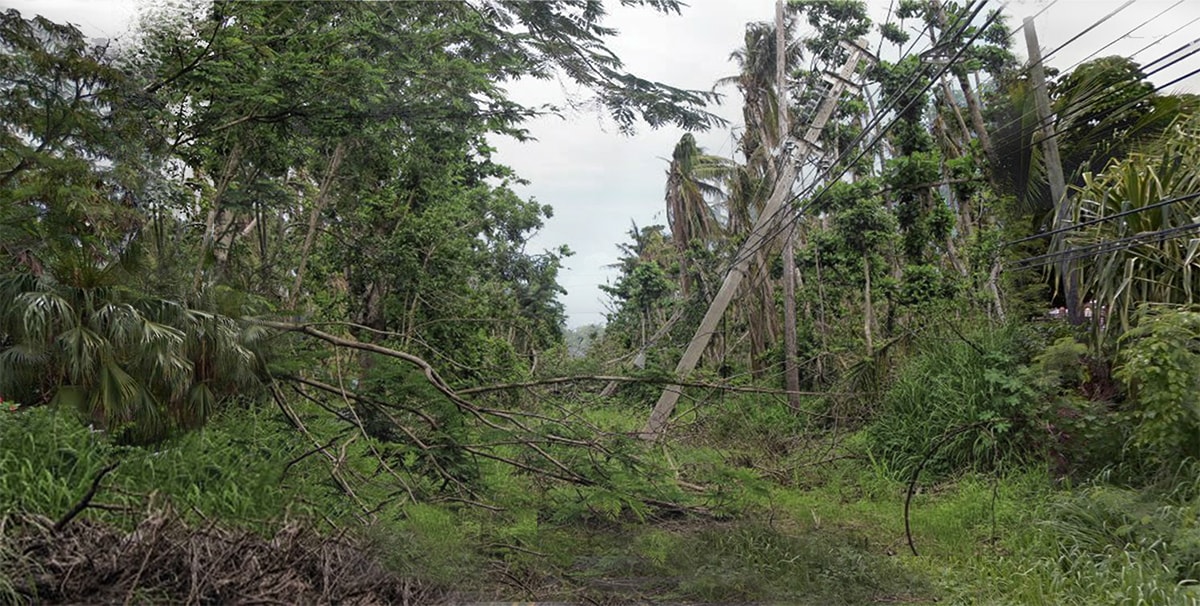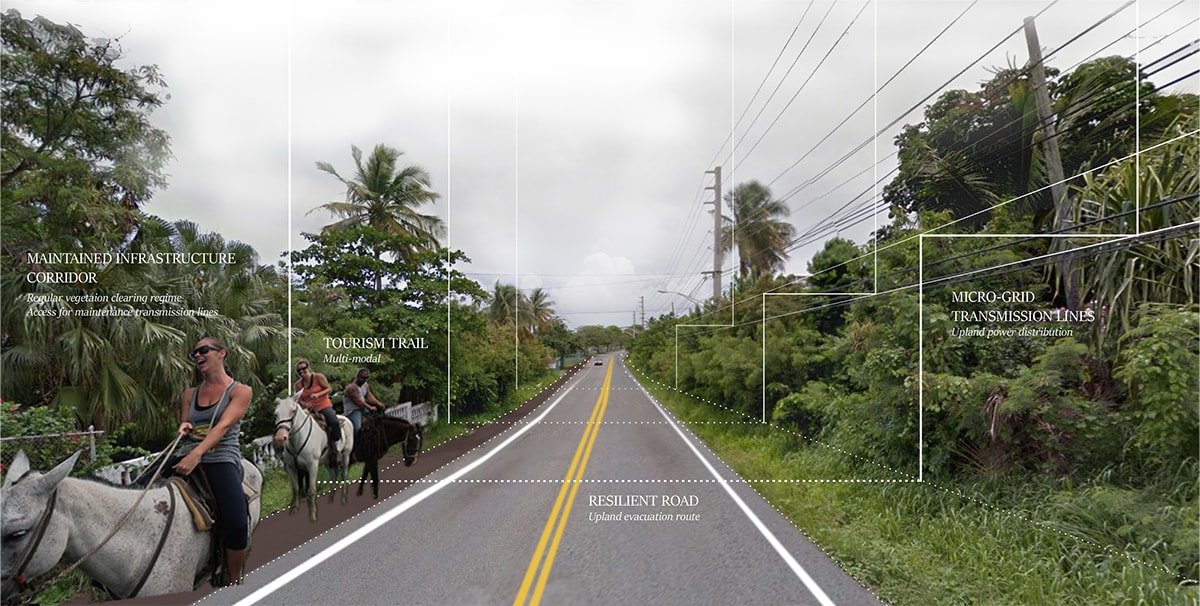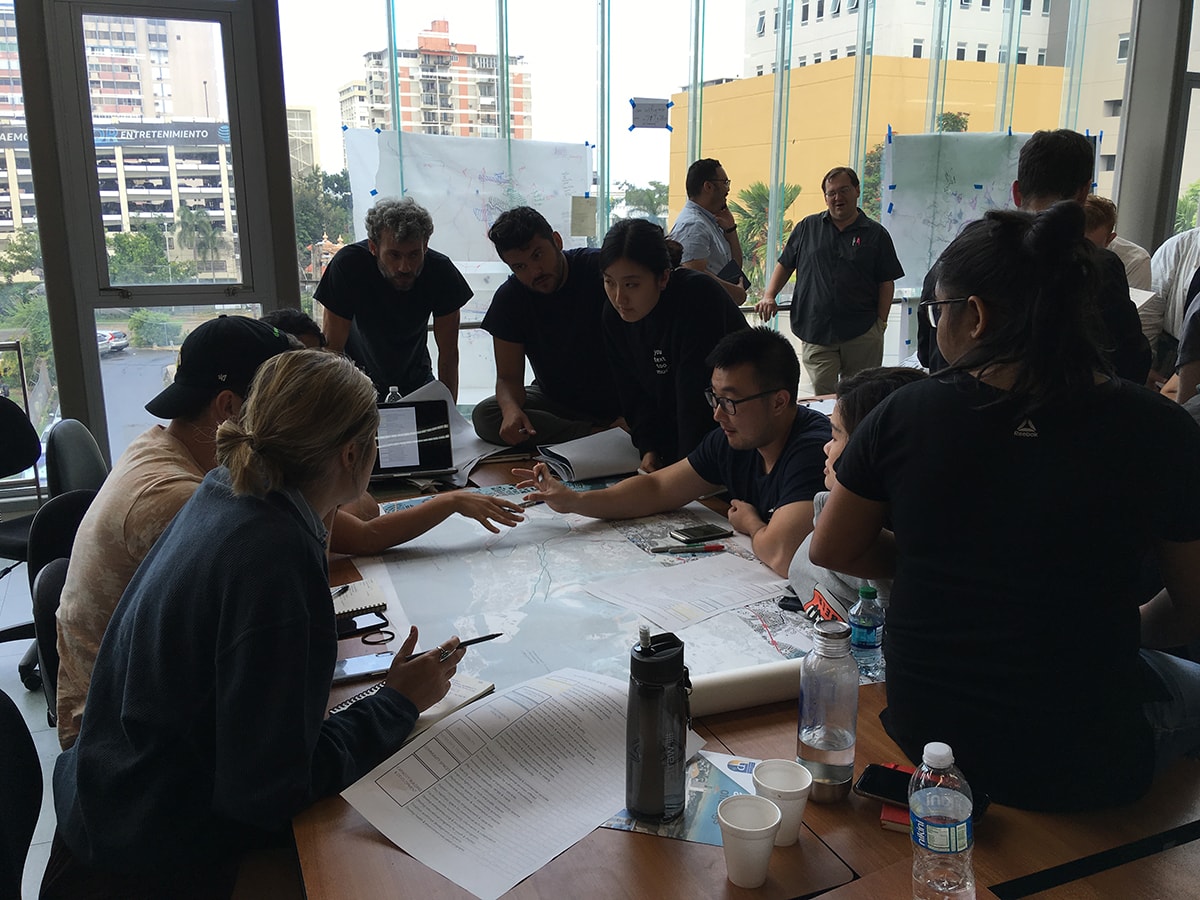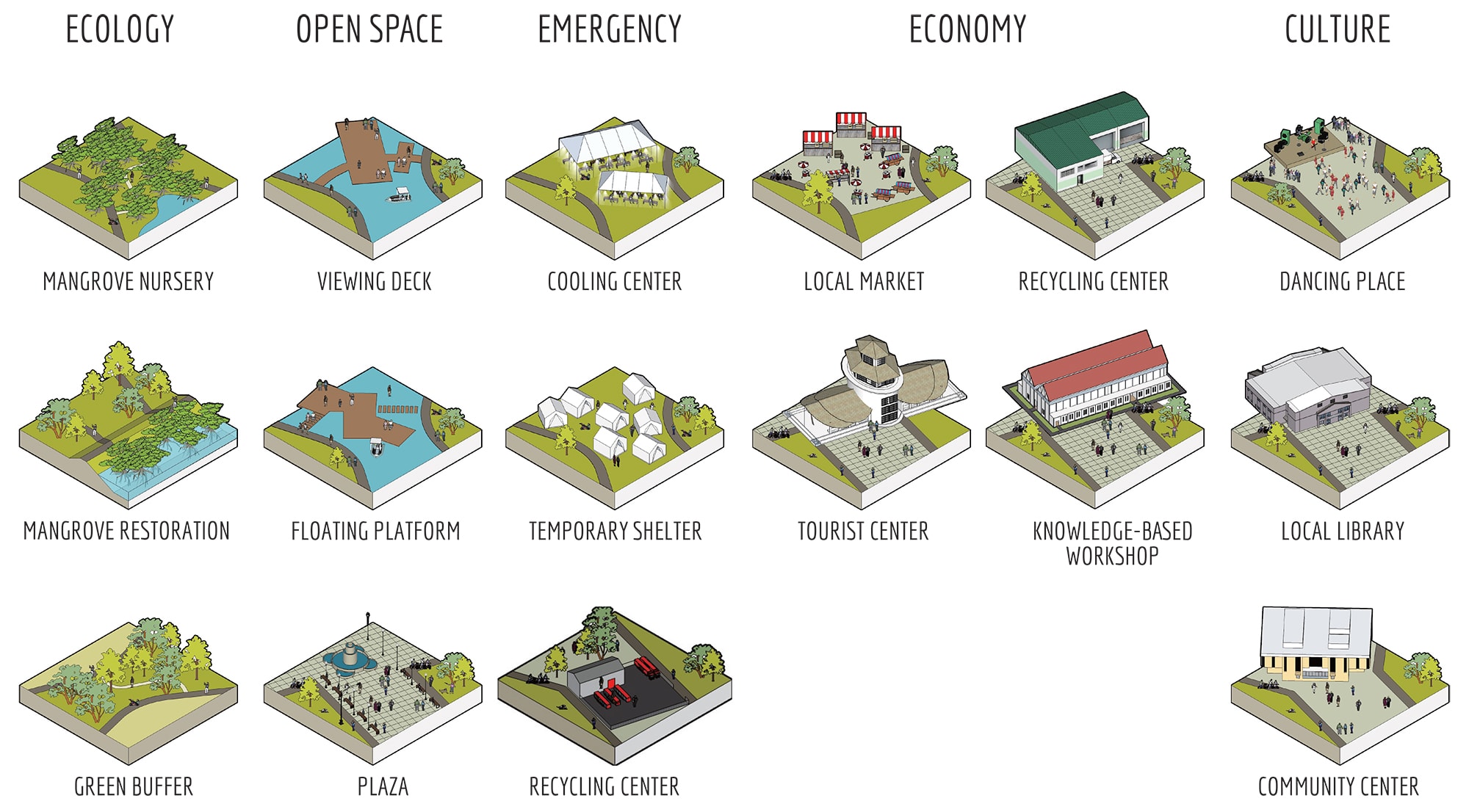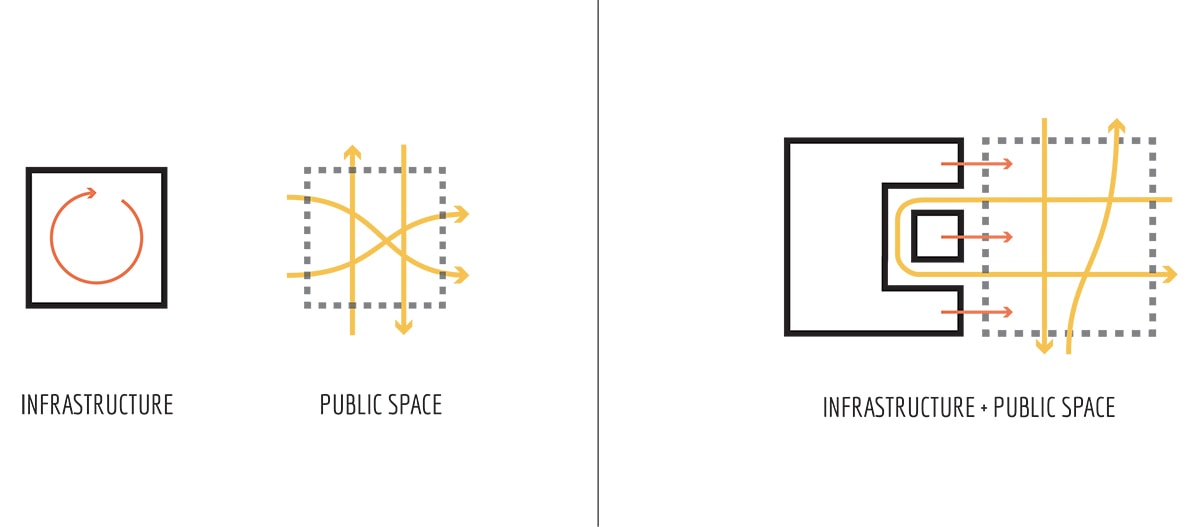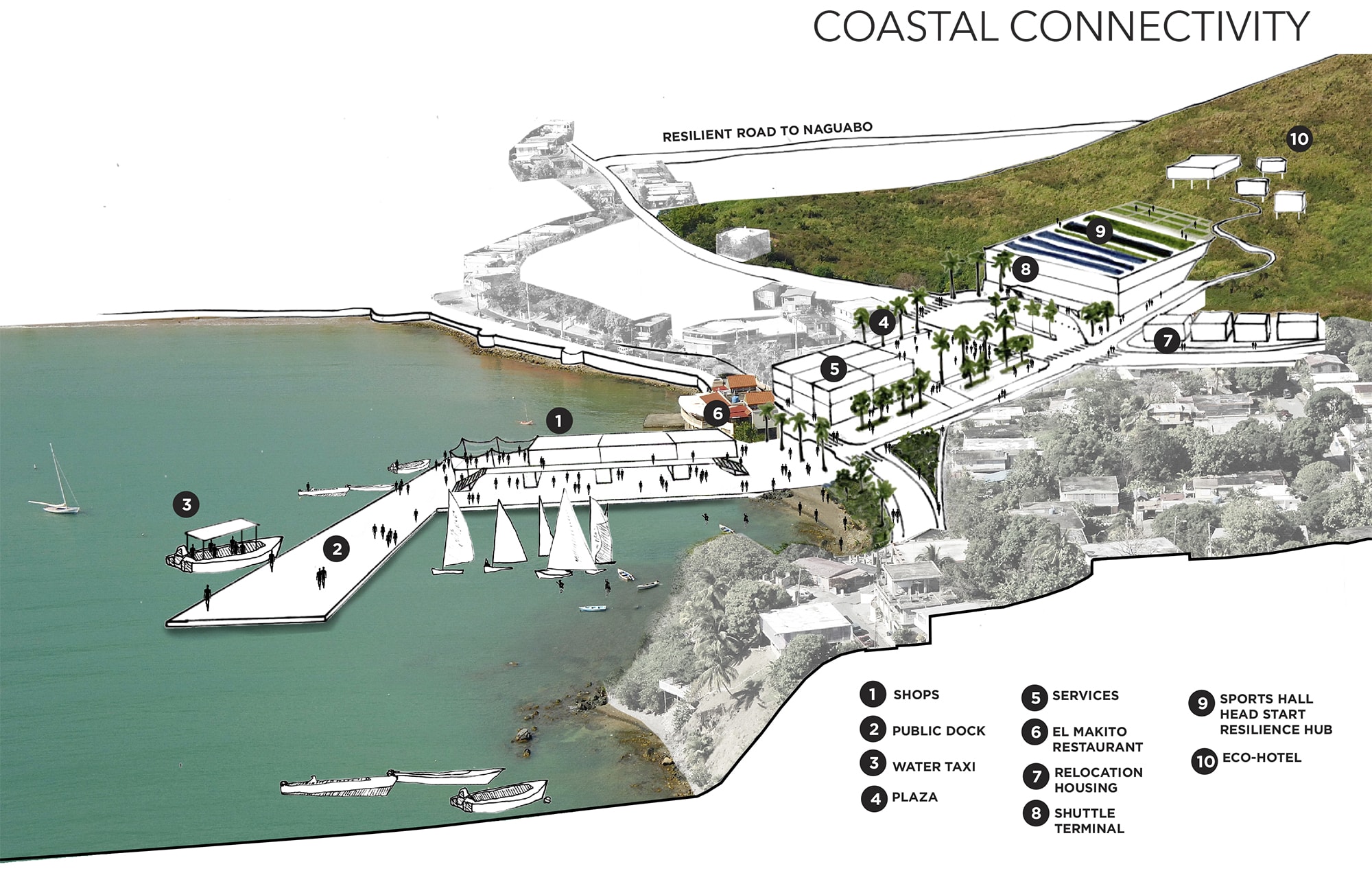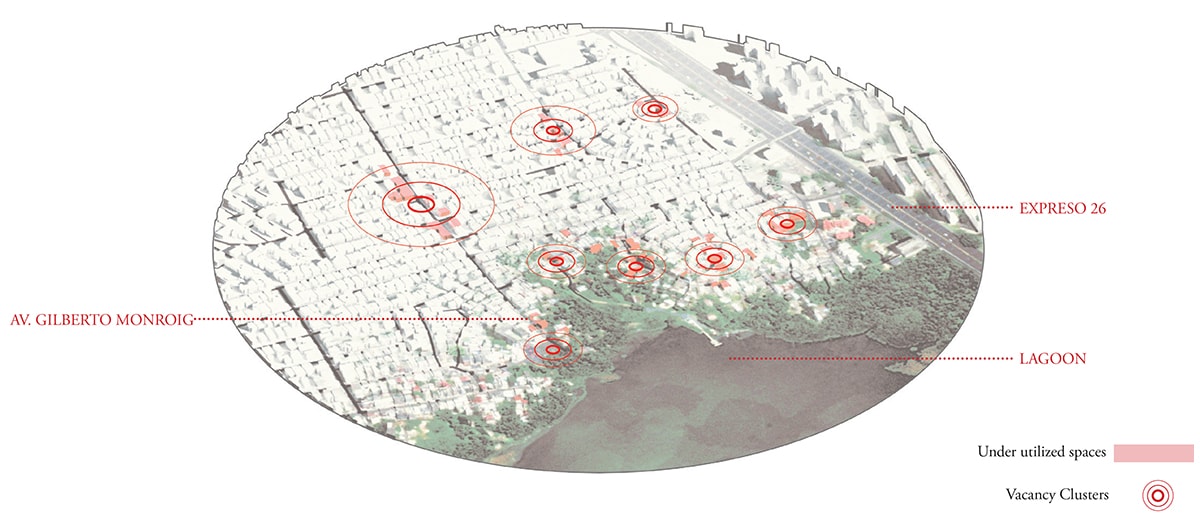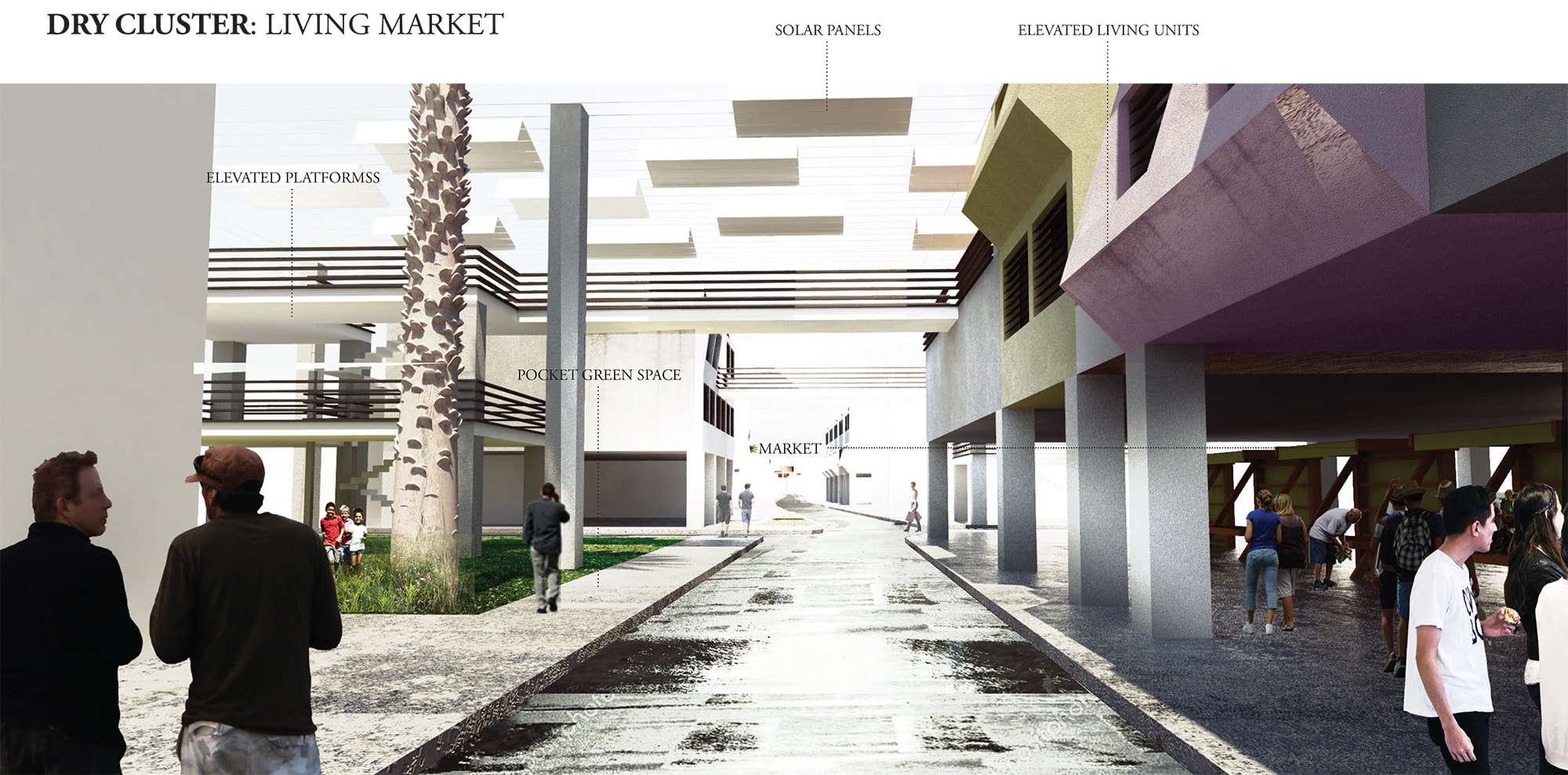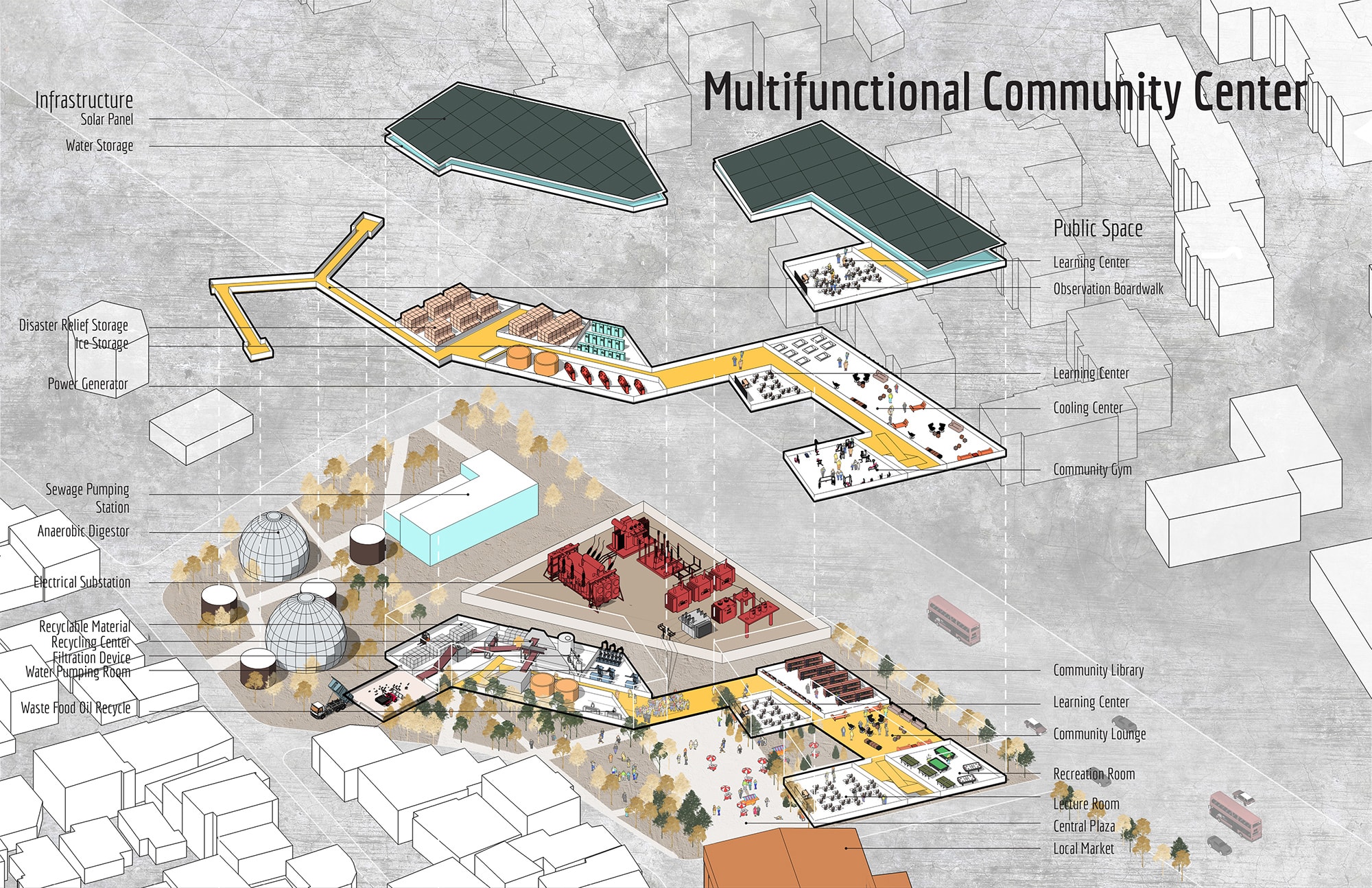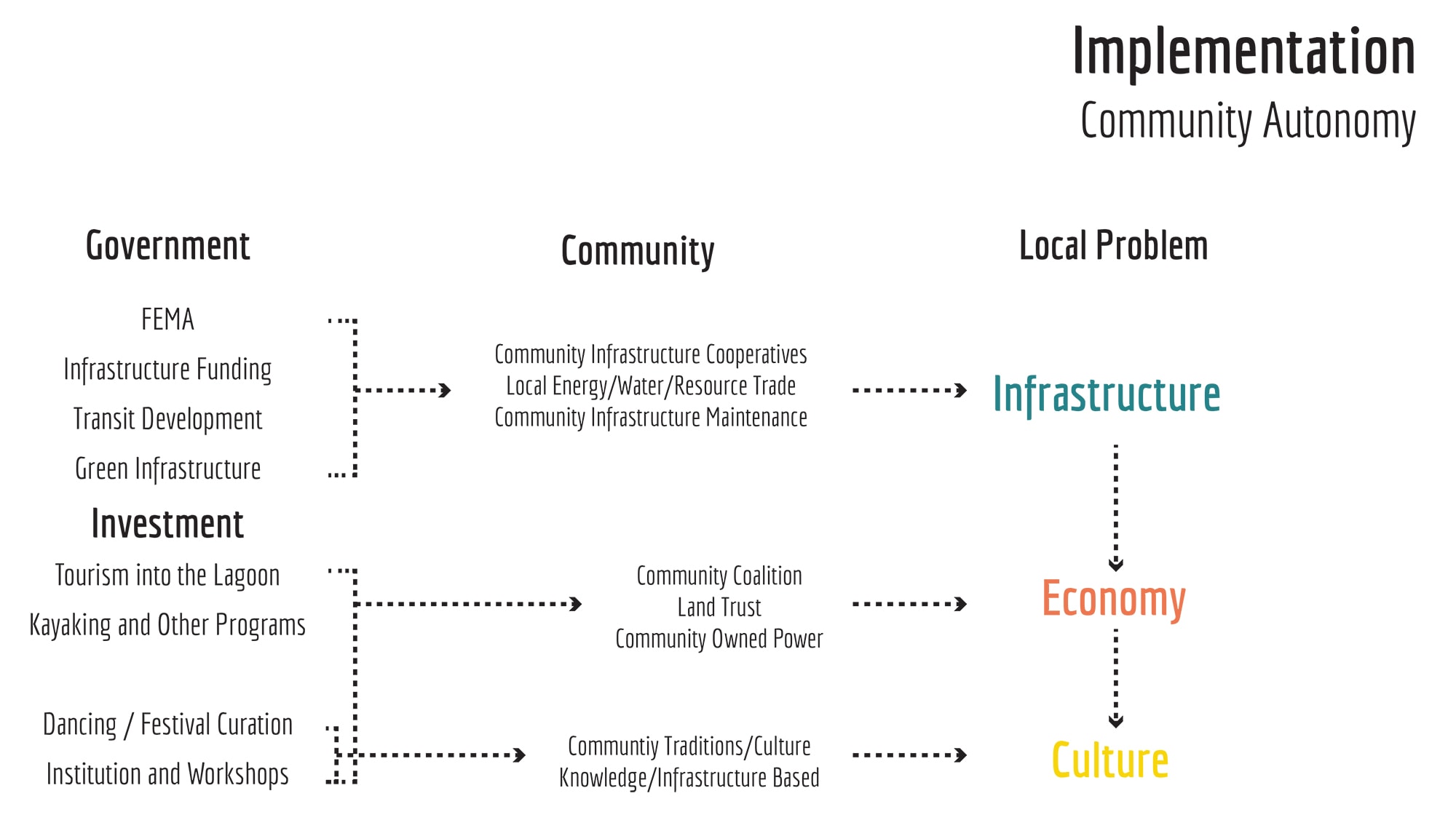In September 2017, Hurricane Maria dealt a devastating blow to Puerto Rico’s infrastructure, landscapes, communities, and economy. The blackout following the hurricane was the longest in U.S. history, and the second-largest blackout in world history [1]. Most of the deaths following Maria were not a direct result of the hurricane’s winds or waves, but of the subsequent loss of power.
The blackout exposed the interconnectedness of critical infrastructures — reminding us that so many of the services that we rely on every day are directly tied to a continuous supply of electricity. Water pumps and filters cannot operate without power; neither can dialysis machines or refrigerators for cooling insulin; ATMs cannot distribute cash, and credit card readers can’t process transactions. Long after the winds died down, the power outage in Puerto Rico led to drinking water shortages, a complete communications breakdown, a housing crisis, a spike in suicides and violent crime, and a public health emergency. Hospitals initially relied on generators, but ran out of diesel to power them, leaving patients without vital life support equipment or light for surgeries. Eventually, we would learn that more than 2,975 people lost their lives.
Hurricane Maria, 19 September 2017. Photo by Antti Lipponen / CC BY
As the government struggled to restore electricity and replace damaged infrastructure, the hurricane also exposed the tight connection between power and politics on the island. The communities most impacted were the most remote, with the highest rates of poverty, and the fewest connections to decision-making. As Puerto Rico’s island-wide utility — the Puerto Rico Electric Power Authority, or PREPA — struggled to restore power amid scandal, political intrigue, and mismanagement, it did not prioritize re-connecting hard-to-reach mountain communities and poor informal settlements. Some households remained without power for a full 11 months after the storm. Some communities, such as the towns of San Sabastián and Coamo, got tired of waiting for PREPA and did the electrical work themselves.
On the east side of the island, directly in the path of Hurricane Maria, the fossil-fueled power plants went down, but large-scale wind and solar farms also sustained heavy damage. Only the small hydroelectric Rio Blanco plant stayed on. Image by Sarah Gaines
Hurricane Maria exposed and exacerbated long-standing structural weaknesses — in the economy, governance, and physical energy infrastructure of the island. PREPA’s grid had been designed with large centralized power plants and long-distance transmission lines, transmitting the bulk of electricity over the rugged central mountains —a highly brittle system — and the crucial transmission line rights-of-way were both badly overgrown and long overdue for upgrades. PREPA — nine billion dollars in debt, undergoing bankruptcy, and riddled with corruption — had racked up years of deferred maintenance on critical parts of the energy system, including the transmission grid.
In this way, the breakdown of the power grid began long before the hurricane. Structural dysfunction continued through the recovery effort. Much of the recovery work was shaped by a federal U.S. law known as the Stafford Act that only allows the Federal Emergency Management Agency (FEMA) to rebuild a system to the state it was in prior to destruction. While this law originally sought to avoid corruption and misuse of federal funds, it completely undermines any ability to build back smarter or better. During the recovery few of the common-sense improvements to the energy system were even attempted. As PREPA’s CEO admitted one year after the hurricane, after $3.2 billion in repairs, “It’s weaker today than before.”
Utility rights-of-way have long been inadequately maintained [top]. Instead, a proposed upgrading of powerlines reconceptualizes them as a part of a bundled infrastructure corridor, with a resilient evacuation road and tourism trail [bottom]. Image by Sarah Gaines
Decentralized Community Power
In this context a landscape architecture studio, taught by the author at the University of Pennsylvania in Fall 2019, set out to learn from the failures and frustrations on the island, and envision possibilities for improving resilience to future disasters. The studio travelled to Puerto Rico, visited several sites that were especially hard-hit by the blackout, and met with community leaders, who explained their experiences and their ongoing challenges. The studio asked students to imagine what it would mean to rethink long-term recovery based not on the system as it existed before the storm, but on how it might be if it were to be based on ideas of community autonomy and community power.
Students learning from community leaders, first responders, and local architects and resiliency experts during the studio’s visit to Puerto Rico. Photos by Nicholas Pevzner
If the existing energy system is premised on an inherently brittle model, structurally unable to meet the needs of the most vulnerable communities, then one alternative, as Marcel Castro Sitiriche, a professor of electrical engineering from the University of Puerto Rico-Mayagüez has suggested, is “radical power decentralization, starting at the household level.” What would this look like? Can the island afford such radical transformation? His research lays out a tangible proposal. At an estimated cost of $1.4 billion, a small sliver of the $20 billion in recovery money promised to Puerto Rico, a robust system of 200,000 solar-powered houses backed up with batteries could be built to serve the most vulnerable households on the island— so that, in his words, “if your community spends seven months without power, you don’t have to worry about it, because we [will] at least have something, at least to survive” [2].
Community power is about more than electricity. Urban sociologist Eric Klinenberg, in his autopsy of the 1995 Chicago heat wave, found that communities with stronger social ties had lower mortality and were better able to weather the stresses that tend to kill the most vulnerable [3]. And in his subsequent book Palaces for the People, Klinenberg credits social infrastructure and civic institutions such as libraries and parks with strengthening communities’ social networks and making populations less vulnerable to dangerous external stresses [4].
The studio also drew on the concept of energy democracy — the idea that communities have a right to control their own energy generation and be included in decision-making about their energy. All infrastructure is political, and in Puerto Rico the politics around energy infrastructure cuts straight to the question of who gets to make these decisions. Whereas Puerto Rico’s legislature passed a bill requiring a Renewable Portfolio Standard (RPS) of 100% renewable energy by 2050 (and 40% by 2025), the bankrupt utility PREPA is planning to grow the share of energy generation from natural gas to 35% as part of its bankruptcy transition plan.
Advocates of U.S. fossil fuel exports like U.S. House Natural Resources Committee chairman Rob Bishop has expressed a desire to see Puerto Rico become “the energy hub of the entire Caribbean,” reliant on imported natural gas. Pushing back, Arturo Massol-Deyá, the director of the environmental non-profit Casa Pueblo, has been blunt about the agenda he sees behind such plans: “to perpetuate Puerto Rico’ colonial status quo.” His response? “Generating energy with the sun, water, wind, and biomass through micronetworks, hybrid systems, and other configurations at the point of consumption.” “Energy self-sufficiency,” Massol-Deyá says, “could be our first step toward decolonization” [5]. In the studio, we were interested in systems that are emancipatory and democratic, not those that defend the agenda of profiteering energy companies or politicians that see Puerto Rico as a neo-colonial captive market.
Groups of students testing ideas for resilient urban development and decentralized community power, in a fast-paced design charrette held at Universidad Politecnica de Puerto Rico. Photo by Nicholas Pevzner
New Anchors for Community Resilience
In the same way that Casa Pueblo’s headquarters served as an energy oasis for the town of Adjuntas during Hurricane Maria, the studio imagined a radically decentralized energy system organized around locally owned and operated community facilities, which we termed “community hubs.” Other Puerto Rican organizations such as Resilient Power Puerto Rico have been setting up similar solar-powered hubs across the island in the aftermath of Maria, and the studio drew inspiration from these successful efforts. We saw such community-based energy hubs as having a radical potential to reframe the spatial distribution of resources, community preparedness, and political control.
The studio pushed back on the idea of a single-function “resilience center,” instead imagining how spaces that bring the community together and strengthen social ties during daily life, could also provide emergency services during disasters. These social spaces were designed to quickly switch modes during extreme events: to act as rallying points for evacuation, for medical services, for critical infrastructural services like potable water, electricity, communication, and emergency cooling — and to be able to host the long recovery process after a disaster, like support with filling out the stacks of paperwork of FEMA forms and insurance claims, which for many people can be a challenge without technical assistance and reliable internet.
In the window of opportunity afforded by post-disaster recovery, and working with local partners who understood the challenges of our communities of concern, the studio looked for adequate sites for these kinds of multi-purpose community hubs, where we could test the principles of community resilience and community power.
Community hubs support communities during both daily life and emergency events: providing a range of services such as local markets, cultural events, gardens, temporary shelter, and emergency services. Image by Zhiyu Wei
While each of the studio’s proposed projects imagined its own unique assemblage of components, fine-tuned to the constraints and demands of its site, all of the network of community hubs as a network of as integrated parts, and as components that add up to build local community self-sufficiency and local community power. Across the studio, when we imagined what strong nodes in the energy network would look like, we concluded that they should be reinforced through public space, housing, higher density, and then of course also have all the emergency response components, and all the critical needs of a reliable water and food supply. They needed to have enough room in the urban fabric to support shelter, staging, and evacuation, but also enough legibility to support community gathering and the basics of collective daily life.
 Typically, infrastructure and public spaces are thought of as two separate things, and infrastructure is invisible to most people until it breaks down. Studio projects instead imagined community hubs as facilities that served both infrastructural and public space functions. Image by Zhiyu Wei
Typically, infrastructure and public spaces are thought of as two separate things, and infrastructure is invisible to most people until it breaks down. Studio projects instead imagined community hubs as facilities that served both infrastructural and public space functions. Image by Zhiyu Wei
Speculative Designs for Community Power
The first project, by Sarah Gaines, is located in the tiny coastal town of Húcares on the east coast of Puerto Rico. The project imagines a multifunctional community hub for both emergency response and community identity. Positioned to take advantage of a vacant parcel in the middle of the town, this project proposes a suite of public facilities, running from a new elevated and reinforced public dock at the water’s edge, up to a public plaza and resilient community hub perched on the high ground, with its own energy production. The community hub features school facilities and a sports hall for daily use, and faces out onto a proposed new plaza, which is a traditional public space typology characteristic of old Spanish cities that Húcares currently does not have. The public plaza connects to a new resilient evacuation road up on the high ground, along with public services such as a proposed new shuttle bus terminal and new market.
The community hub knits together community life, tourism, and critical infrastructure between the road and the water’s edge. Image by Sarah Gaines
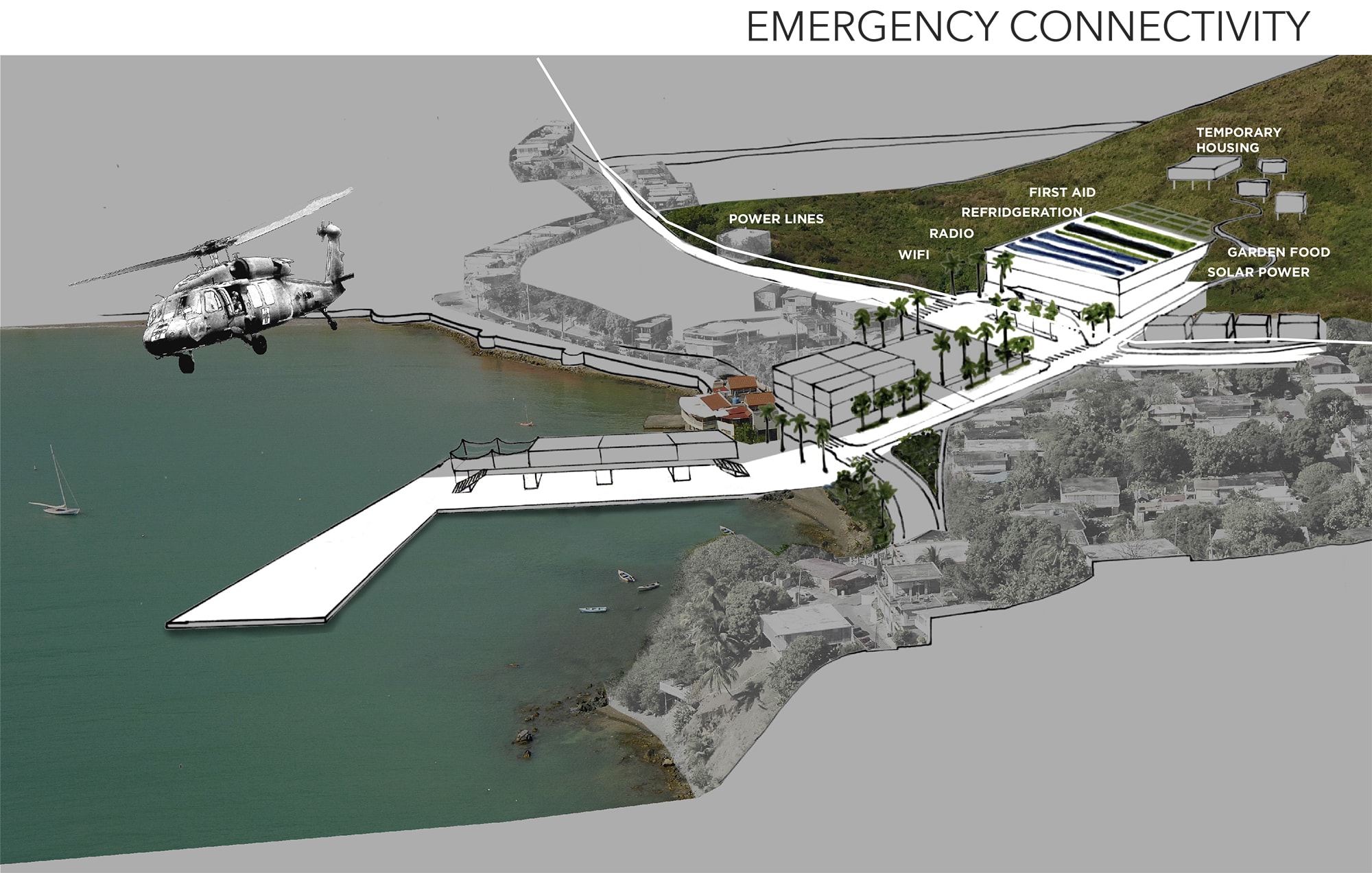 A proposed central plaza and community hub for the town of Húcares, featuring a hardened public dock with shops and restaurants, a bus terminal, and community programming. Images by Sarah Gaines
A proposed central plaza and community hub for the town of Húcares, featuring a hardened public dock with shops and restaurants, a bus terminal, and community programming. Images by Sarah Gaines
During emergency events, the resilience hub transitions into a communication, energy, and cooling center, while the reinforced public dock can accept emergency supplies by air or water. By placing this flexible staging ground in the heart of town, instead of at the sports stadium on the periphery, this location can become both a central hub for daily life, and an obvious go-to point during emergencies.
The Playita neighborhood in San Juan: an informal self-constructed neighborhood in the heart of the capital city. Photos by Nicholas Pevzner
Energy insecurity and social vulnerability need not be remote to be acute: right in the capital city of San Juan is a desperately poor and vulnerable neighborhood on the San Jose Lagoon called Playita, informally built over multiple generations on ground that used to be marshland, subject to severe flooding even during normal rainstorms. It was hit extremely hard during Hurricane Maria, with flooding of over 4 feet. Located only about a dozen blocks from wealthy oceanfront enclaves like Ocean Park, Playita is underserved on many fronts. Community members do not own the land, and the city does not normally invest in this neighborhood, or even notice it.
Potential sites for community hubs in Playita, based on clusters of vacant parcels on higher ground. Image by Prince Langley
Prince Langley’s proposal for Playita considers how recovery funding might be pooled and redirected to truly secure the housing needs of community members. Focusing the investment on acquiring land in areas of clustered vacancy, and then spending on structural piles and platforms that can host offsite-fabricated housing units, this project speculates on how coastal retreat could actually be implemented.
Poor informal communities such as Playita today don’t own the land their houses are built on, often lack the resources to rebuild after disaster or enter the formal housing market, and lack the ability to access recovery funding such as Community Development Block Grants for Disaster Recovery (CDBG-DR) funds from the Department of Housing and Urban Development (HUD). The project operates acupuncturally and opportunistically on vacant parcels and available spaces, avoiding the displacement that accompanies larger, less flexible projects — and potentially growing over time as more parcels become available.
 Elevated community clusters provide protection against flooding. Recovery funding can be pooled towards the construction of public platforms elevated on sturdy piles; residential modules and community facilities can then take advantage of the elevated ground plane. Images by Prince Langley
Elevated community clusters provide protection against flooding. Recovery funding can be pooled towards the construction of public platforms elevated on sturdy piles; residential modules and community facilities can then take advantage of the elevated ground plane. Images by Prince Langley
The elevated platforms hark back to a more traditional way of living on marshy ground, such as old wooden buildings in San Juan that were built on stilts. The proposed elevated clusters themselves take on infrastructural functions, becoming both community spaces and infrastructural bases, which can be supplied with provisions by boat or helicopter during an emergency, can generate energy, store water, etc. — while the ground-plane serves as a gathering space that can host community activities during normal, non-emergency times.
The platforms are proposed to be community-owned, taking advantage of CDBG-DR post-disaster HUD funding, while individuals could buy their own modules, delivered pre-assembled, or self-construct their own elevated living quarters on top of the collective platform. The space below, meanwhile, would remain public, both deriving its vitality and supporting the life of the street during calm weather with the community functions located above.
 The spaces below the proposed community clusters can host public activities during dry weather, reinforcing the life of the street. Housing and community infrastructure are elevated to withstand flooding risk. Images by Prince Langley
The spaces below the proposed community clusters can host public activities during dry weather, reinforcing the life of the street. Housing and community infrastructure are elevated to withstand flooding risk. Images by Prince Langley
Another project, by Zhiyu Wei, imagined a network of multipurpose infrastructural community facilities that would physically protect the neighborhood against inundation. Here the proposed community center consists of a learning center, gym, and a library next to a central plaza and local market. At the same time, it integrates decentralized infrastructure processes, like local power generation from anaerobic digestion and solar energy, along with water filtration, water storage tanks, ice production and storage, emergency supplies storage, and a cooling center, all visible to the community.
A proposed multifunctional community hub, with both the infrastructural and the public space functions articulated. Such hubs would serve the social and infrastructural functions of the community’s daily life, but also stand ready to provide emergency functions in case of a grid-wide power outage. Image by Zhiyu Wei
Cooperative Community Power
Finally, the studio waded into ideas of how the idea of community land trusts and cooperatives could be extended to infrastructure. Across San Juan, informal neighborhoods such as Caño Martín Peña have used the political mechanism of community land trusts in order to gain cooperative control for lands to which they have no formal deeds. This project extends this idea of communal ownership and applies it to infrastructure, and to the funding mechanisms that accompany these critical investments.
Conventionally, infrastructure is paid for by government, but in vulnerable and disempowered communities like Playita, this has predictably resulted in infrastructure that doesn’t get maintained or upgraded. In Zhiyu Wei’s proposal, government funding along with external investment, goes to support community infrastructure cooperatives, which in turn procure the kinds of infrastructure that they will be able to maintain, and which will make the greatest impact in the community. The infrastructure, in turn, supports economic development through tourism and local small businesses, in a space that has a public-facing urban design expression, where locals and tourists can mix freely.
Proposal for a cooperatively-owned community infrastructure framework, showing how Community Infrastructure Cooperatives could be set up along similar lines to the community land trusts that exist in other communities today. Image by Zhiyu Wei
These projects offer a glimpse of what a community-centered approach to resilience looks like. In reality, of course, such projects must be informed by the experiences, needs, expectations, and imaginations of communities across Puerto Rico. The studio projects seek to open up a space for such a conversation.
Unlike disaster response, which needs to act quickly and solve urgent problems pragmatically, the window of long-term disaster recovery moves more slowly — closer to the admittedly slow speed of design. The promise and potential of design is to re-think established orthodoxies and imagine alternative possibilities that can be elegantly multi-purpose and open to dynamic change. Emergency infrastructure needs to be flexible, multi-functional, participatory and grounded in community needs and identity. The response to the devastation of Hurricane Maria should not be a one-size-fits-all approach that rebuilds the outdated and hyper-centralized energy system.
As Puerto Rican politics continues to be roiled by both the federal United States’ and the Puerto Rican government’s inept and sluggish response to communities’ demands for energy democracy and energy justice, now is the time to rethink the design of recovery plans and make sure that communities are able to build back in a way that preserves and in fact advances community power.
Acknowledgements:
Studio Participants: Shanshan Bai, Sarah Gaines, Prince Langley, Shannon Rafferty, Zhiyu Wei, Wenqian Wen, Mengen Xu, Shuyao Zhang. Initial group research for this studio was done in collaboration and partnership with a concurrent studio in the University of Pennsylvania Department of City and Regional Planning, taught by David Gouverneur and Allison Lassiter. Deep thanks to our local contacts and partners Alejandra Castrodad-Rodríguez, José Juan Terrasa-Soler, Jerry Kirkland, C.P. Smith, José Ríos, Eileen Poueymirou, Edmundo Colón, and Anna Georas. Additional thanks to Fátima Olivieri and Henryk Tomassini for their keen guidance on Puerto Rican history, culture, architecture, and politics throughout the semester.
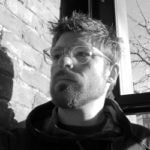 Nicholas Pevzner is a landscape architect, educator, theorist, and researcher working on the socio-spatial impact of energy infrastructure, including spatial planning for the renewable energy transition. He is a Senior Lecturer in landscape architecture at the University of Pennsylvania School of Design, and a Faculty Fellow at the Kleinman Center for Energy Policy at UPenn, with a decade of combined experience of teaching and working in landscape architecture. Nicholas teaches graduate design studios, which have included regional- and territorial-scale landscape design questions focused on landscape infrastructure and energy infrastructure. Most recently, he led a studio investigating the post-disaster response in Puerto Rico, which focused on strategies for advancing recovery in the wake of Hurricane Maria while promoting local community power. Central to this studio was the design and planning of multipurpose community facilities featuring resilient energy generation and critical services. Nicholas is the co-editor of Scenario Journal.
Nicholas Pevzner is a landscape architect, educator, theorist, and researcher working on the socio-spatial impact of energy infrastructure, including spatial planning for the renewable energy transition. He is a Senior Lecturer in landscape architecture at the University of Pennsylvania School of Design, and a Faculty Fellow at the Kleinman Center for Energy Policy at UPenn, with a decade of combined experience of teaching and working in landscape architecture. Nicholas teaches graduate design studios, which have included regional- and territorial-scale landscape design questions focused on landscape infrastructure and energy infrastructure. Most recently, he led a studio investigating the post-disaster response in Puerto Rico, which focused on strategies for advancing recovery in the wake of Hurricane Maria while promoting local community power. Central to this studio was the design and planning of multipurpose community facilities featuring resilient energy generation and critical services. Nicholas is the co-editor of Scenario Journal.
Notes
[1] Trevor Houser and Peter Marsters. 2018. “The World’s Second Largest Blackout,” Rhodium Group, Report. April 12, 2018. https://rhg.com/research/puerto-rico-hurricane-maria-worlds-second-largest-blackout/
[2] Marcel Castro-Sitiriche, “Alternative Energy Disasters as Windows of Opportunity for Alternative Energy Pathways.” (Presentation, RISE 2019 Conference, University of Albany) November 2019. https://rise2019.org/programs/windows-of-opportunity.html
[3] Eric Klinenberg. Heat Wave: A Social Autopsy of Disaster in Chicago. Chicago: University of Chicago Press, 2002.
[4] Eric Klinenberg. Palaces for the People: How Social Infrastructure Can Help Fight Inequality, Polarization, and the Decline of Civic Life. New York: Penguin Random House, 2018.
[5] Artuto Massol-Deyá. “The Energy Uprising: A Community-Driven Search for Sustainability and Sovereignty in Puerto Rico.” In Aftershocks of Disaster: Puerto Rico Before and After the Storm, eds. Yarimar Bonilla and Marison LeBrón, (Chicago: Haymarket Books, 2019), 304
Cite
Nicholas Pevzner, “Speculative Designs for Energy Democracy,” Scenario Journal 07: Power. December 2019. https://scenariojournal.com/article/speculative-energy-democracy/

